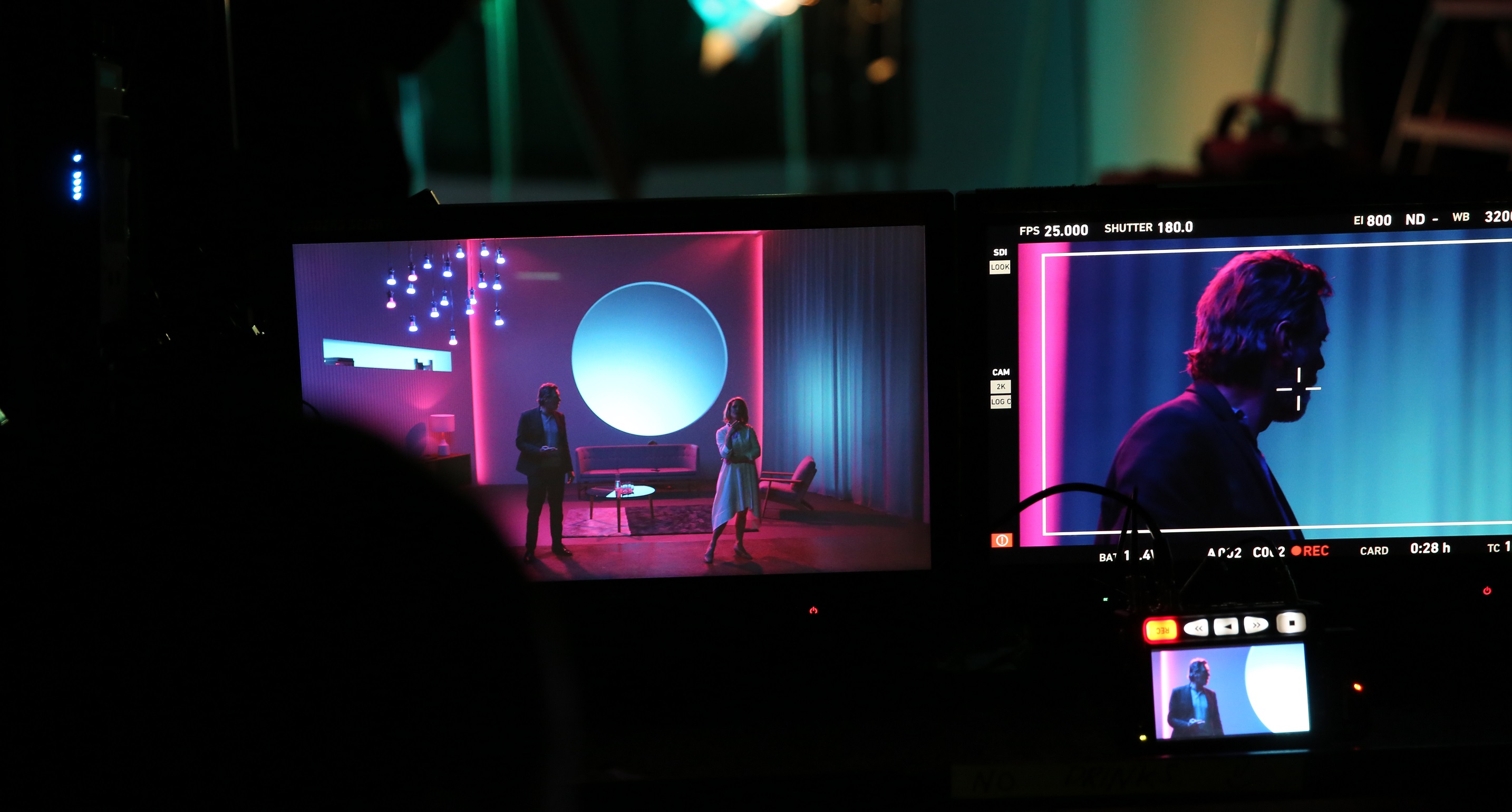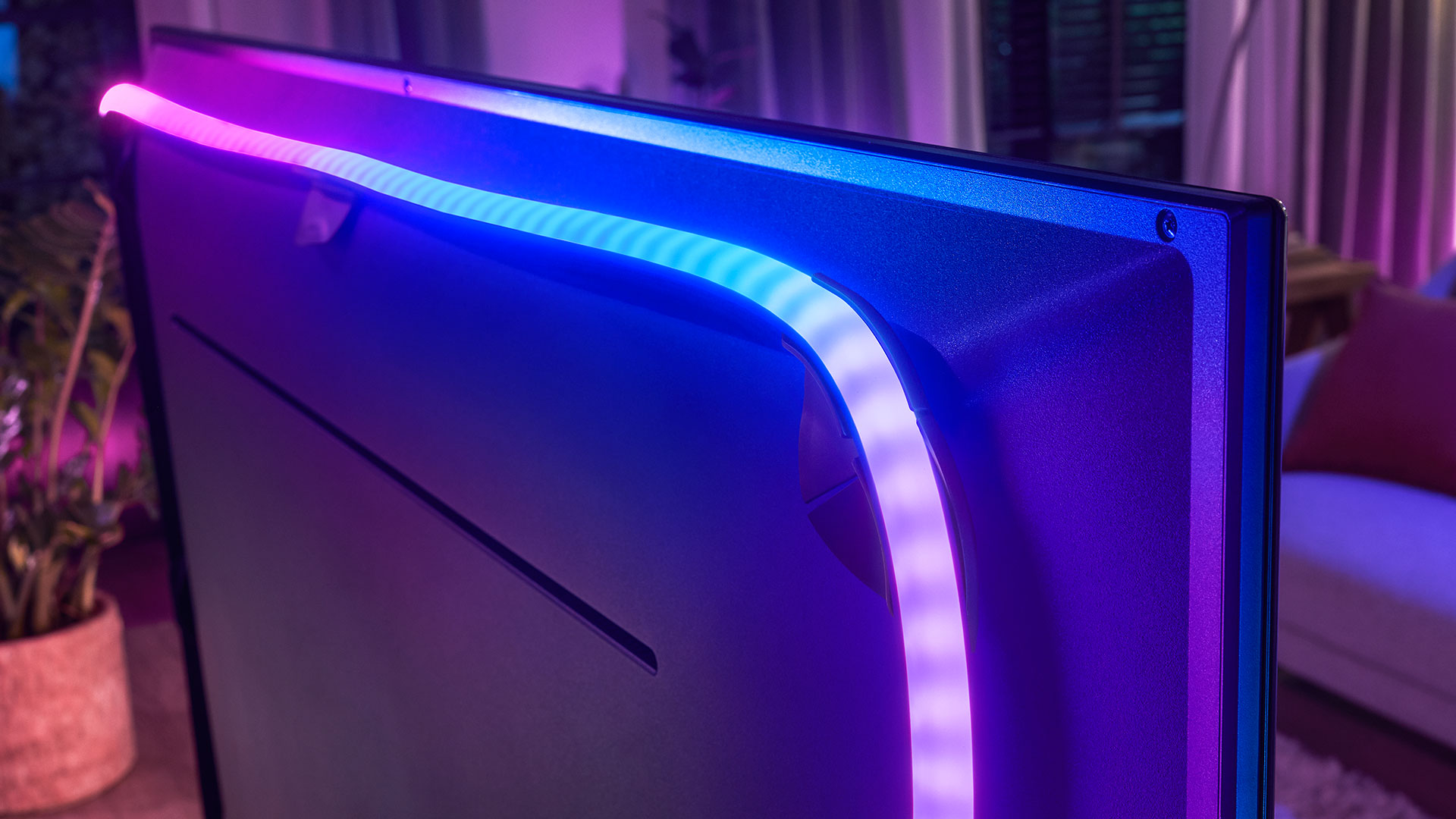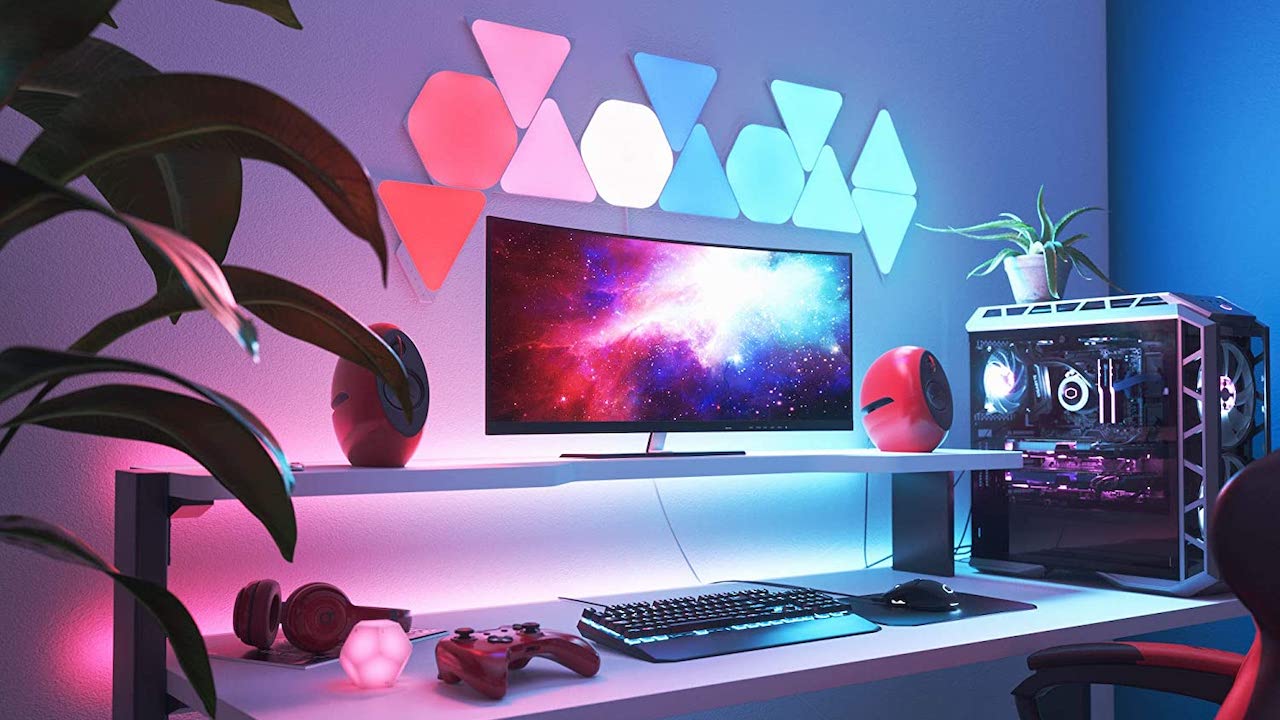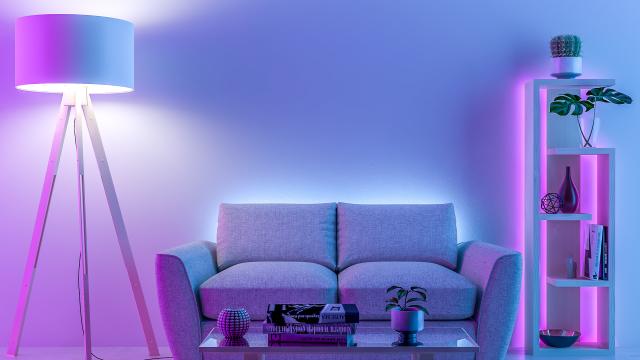Lighting can play a big part in our lives, affecting everything from our moods all the way to our health. With smart lighting, you’re given the ability to control the ambience and mood of a room, allowing you to transform your home as you see fit – whether that’s replicating the warm glow of candlelight to make a dinner feel more romantic or by lighting your room with a subtle red light to increase the tension while watching a horror movie.
Smart lighting is also a fairly inexpensive way to restyle any room in your house that doesn’t involve you splashing out for new furniture or going for a major renovation (which is especially handy if you rent). If you’re a gamer, you can create a stunning glowy set-up that your streamers will envy. Or perhaps you’re the designated entertainer in your group of friends and you want to spice up a game night, then toss in a few purple light strips to transform your living room into a magical den.
Here’s everything you need to know to about smart lighting, along with a few of our favourite recommendations for bulbs that’ll help give your home’s vibe a makeover.
What makes a light “smart” anyway?

Your regular old light bulb – whether it’s your ever-diminishing and wasteful incandescent light, or your more modern LED type – really only knows two things: when it’s on it has to get bright, and when the power goes away, so does the light. You control it with a switch on the wall, but beyond dimmer controls that can be downright twitchy and often all too easily breakable, there’s not much intelligence there at all.
Smart bulbs, on the other hand, talk to your home network and each other to engage in a range of illumination possibilities. Typically, there are just a few simple communication standards at play here, with most bulbs using a mix of standard Wi-Fi and Zigbee low-power communication to manage their abilities. That communication is vital because it not only allows for features like voice activation but also scheduling, smart grouping and changes in dimming, colour patterns and coordination with home security systems.
Can I use different smart light bulbs from different makers in my home?

You can certainly install smart lighting products from different makers in your home and use them as bulbs, but sadly there’s little in the way of an industry standard for different bulbs to “talk” to each other or coordinate lighting effects. As such, it’s generally a good idea at this time to pick a brand for simple illumination and stick to it.
That doesn’t mean if one maker produces a light panel, lamp or bulb that particularly takes your fancy that you should never buy it, because there are some ways you can overcome the lack of an integrated standard in smart home lighting.
The easiest way is to ensure you’re buying smart light bulbs that are supported by voice assistants such as Amazon’s Alexa, Google’s Assistant or Apple’s Siri/Homekit. If you’re able to add them to your voice assistant’s app or software package, then it’s entirely possible to live in a multi-brand house, because you rarely (if ever) have to dip into their specific apps to control your lights. All you need to do is say “Hey ASSISTANT NAME, switch on the kitchen and living room lights”, and even if they’re different makes of bulb, you’ll be able to get the illumination you desire. You will miss out on some neat synchronisation features that you get if you do stick to a single brand, though.
[related_content first=”1236499″]
So what’s available in smart lights?

The most basic unit of smart lighting is a smart light bulb. There are a number of newer brands on the market, as well as established players like Philips Hue or LIFX.
Smart light bulbs typically come as either Edison/E27 screw style models or Bayonet/B22 style models. If you’re not sure what bulb type you’re currently using at home, it’s no more difficult than switching the light socket off – that’s important because electrocution is no laughing matter – unscrewing the bulb and checking the end. If it’s a plain screw, that’s an Edison/E27, while if it has prongs that protrude and keep it in place with a single twist, that’s Bayonet/B22 style.
You can also get fixtures that will work with many downlight styles that incorporate smart lighting features, although these are often a little bit more expensive than their E27/B22 counterparts.
There’s not much in standard lighting that doesn’t have some kind of smart light equivalent, from light strips to lamps to path lights to choose from.
If you want to build smart lighting that’s truly of your own design, consider the Nanoleaf light panel system, which lets you build up wall panels from simple geometric shapes into any pattern you’d like. With smart lighting, you’re not just limited to the existing light fixtures in your home. Nanoleaf’s big selling point is in the idea of synchronisation with your entertainment, whether that’s mirroring your onscreen experience with complimentary lighting, or creating a rhythmic effect to go with your choice of music.
[related_content first=”1225336″]
Which smart lights are the best?
Not sure where to start? We’ve rounded up a few of our favourite smart home lighting brands, so you can make the switch with ease. Check them out below.
Smart light bulbs

- LIFX A60 Smart Bulb: Amazon ($47.53) | Catch ($59) | eBay ($59)
- meross Wi-Fi Smart Bulbs: Amazon ($27.99) | eBay ($34.19)
- Nanoleaf Essentials Smart Bulb: Amazon ($25.07) | Nanoleaf ($39.99)
- Philips Hue White LED Smart Bulb: Dick Smith ($38.99) | eBay ($53.95)
- TP-Link Smart Wi-Fi Light Bulb: Amazon ($49) | eBay ($46.99)
Smart light strips

- Nanoleaf Essentials Light Strip: Amazon ($70) | Dick Smith ($99.99) | eBay ($99.99)
- Philips Hue Light Strip Plus: Amazon ($127.99) | Dick Smith ($127.99) | eBay ($139)
- Philips Hue Gradient Light Strip: Amazon ($229)
Other smart lights

- Nanoleaf Lines Smarter Kit (9 Pack): Amazon ($349) | Dick Smith ($348)
- Nanoleaf Shapes Hexagon Smarter Kit (5 Panels): Amazon ($219) | Catch ($219.99) | eBay ($229)
- Nanoleaf Shapes Triangles Mini Starter Kit (5 Pack): Dick Smith ($156) | eBay ($189)
- Philips Hue Play Smart LED Bar Light: Amazon ($197) | eBay ($249)
- Philips Hue Go 2.0 Portable Light: Amazon ($109.95) | Dick Smith ($147) | eBay ($149)
What can I do with smart lighting system to improve my home?

At the simplest level, you can more fully automate lighting without having to reach for a light switch all that much, if ever again. Whether you prefer an app-based approach – most smart lighting systems work predominantly off iOS or Android devices – or a voice command, there’s something quite liberating about being able to enable lights to come on before you get to a room, or for that matter making sure that all your lights are off when you go to bed to save power.
Most smart lights also incorporate a level of dimming within the bulb, which means even if you don’t have dimming switches installed you can change the illumination effect in a given room. That’s great for movie watching, but also if you’ve got very young children who struggle to sleep in a fully darkened room, as you can set the lights to dim out over time to help them out. One caveat here: If you do have dimmer switches, most smart bulbs suggest you either disengage them or never touch them, as the way they handle dimming is quite different to the way smart bulbs do, and that can lead to bulb issues.
[related_content first=”1225309″]
You know how you can get different “white light” bulbs to mimic effects like old-school incandescents or more modern fluoro tubes? That’s true for smart lights as well, but to a much greater degree. Very basic lights will simply mimic the standard warm white setting of most ordinary bulbs, but there’s a lot of variation within single bulbs. Many include circuitry to enable full RGB LED lighting effects, meaning that the same bulb that provides standard white light most of the time can be turned to a blood-curdling red for your Halloween party, light red for that romantic Valentine’s dinner, or anything else that captures your imagination. Because they can shift colour to colour, they can also act as impromptu disco lights, or be set to subtly change colour as the sun sets to accentuate the way they light up a room over time.
If you’re creative with your home décor choices, you can then use smart lighting for spot effects, whether that’s providing complimentary colours for a feature wall, subtle lighting for indoor plants or mood lighting for a more chilled-out experience.
Smart lighting can also play a significant role in home security. Where the old-school approach used those terrible clicking timer switches connected to lamps, you can with ease set up lighting schedules for your house to give the appearance of someone being home, or use smart sensors to flick lights on and make any unwanted lurking types think twice about approaching your property. Of course, the same lights can also be used to make your own at-home approach even simpler, and you can also pretty easily set geolocation features on your phone to enable your smart light features to kick into gear as you come and go from your property.
